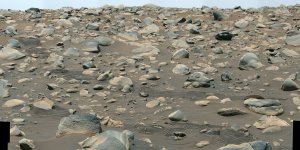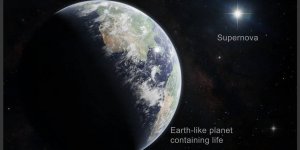| News / Space News |
Hubble Sees Boulders Escaping from Asteroid Dimorphos
Astronomers using Hubble have discovered a swarm of boulders that were possibly shaken off the asteroid when NASA deliberately slammed the half-ton DART impactor spacecraft into Dimorphos at approximately 14,000 miles per hour.

Image of the asteroid Dimorphos. The north and east compass arrows show the orientation of the image on the sky. Photo: NASA, ESA, David Jewitt (UCLA); Alyssa Pagan (STScI)
The 37 free-flung boulders range in size from three feet to 22 feet across, based on Hubble photometry.
They are drifting away from the asteroid at little more than a half-mile per hour – roughly the walking speed of a giant tortoise.
The total mass in these detected boulders is about 0.1% the mass of Dimorphos.
The boulders are most likely not shattered pieces of the diminutive asteroid caused by the impact.
They were already scattered across the asteroid's surface, as evident in the last close-up picture taken by the DART spacecraft just two seconds before collision, when it was only seven miles above the surface.
Long ago, Dimorphos may have formed from material shed into space by the larger asteroid Didymos.
The parent body may have spun up too quickly or could have lost material from a glancing collision with another object, among other scenarios. The ejected material formed a ring that gravitationally coalesced to form Dimorphos.
This would make it a flying rubble pile of rocky debris loosely held together by a relatively weak pull of gravity. Therefore, the interior is probably not solid, but has a structure more like a bunch of grapes. (NASA)
YOU MAY ALSO LIKE





